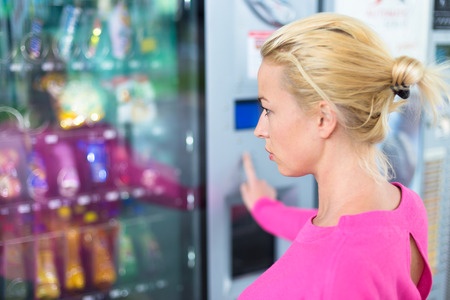Is Self-Service the Future of Customer Service?
Many brands struggle to find ways to improve customer service. In the era of the smartphone, customers have become conditioned to expect immediacy and absolute control.
Today’s consumer doesn’t value the connection with a sales staff or customer service representative to the same degree that they used to.
Traditional customer service doesn’t always provide the immediacy that the new generation of consumers expect. When they have an inquiry about a product, they will search for the answer themselves 91% of the time, over talking to customer service. Today’s user prefers to deal with brands over people.
When given the choice between self-service and speaking with a customer service representative, 67% of consumers prefer self-service [According to research conducted by Nuance].
Brands Are People
The idea of corporate personhood has been around since the 1700s, and really came back into the public eye since Colbert’s 2012 series of reports on the subject. While a corporation is not actually meant to be a person, a brand essentially is. Brands exist as the personification of corporations. They tweet, Snapchat, have relationships and interact with their audience, just like a person.
With brands communicating directly, consumers have less requirement for staff to represent the brand at every turn. They trust the information that they uncover on their own, even if they are discovering it through social media, FAQs or blogs on the brand’s website.
A digital guided sales assistant is one of the new, and effective, ways in which customer service is becoming self-service. Through this interactive touch screen, brands are able to present themselves while empowering the customer. They can navigate at their own pace through an intuitive program allowing them to find answers to questions and compare products.
Today, 80% of consumers research products before making purchases. A self-service option like the guided sales assistant integrated into an high end automated vending kiosk allows customers to conduct their own research on the screen while staying connected to the product, and then purchasing on the spot. This not only empowers the customer but allows the brand to be in control of how their products or services are portrayed. A perfect combination for the Brand as they can showcase their product, manage the interaction and then actually sell the product on the spot.
We know from online sales, 68.63% of purchases are abandoned at the shopping cart stage. One of the leading causes is a lack of adequate information. This is a problem for “offline” shopping as well. How many shopping carts in real life are abandoned because of a lack of information? With customers asking for help from sales staff and customer service representatives with less frequency, how can retailers provide them with accurate information? The user interface on the automated retail store provides instant and actual feedback in terms of what was viewed, if and when a cart was abandoned and what promotions worked. In fact, brands can add 2 to 3 short questions surveying the customers experience … interestingly enough, customers are more open to responding on a public touchscreen vs their own devices.
Self-service options are the answer
Intelligent self-service retail platforms that include software like the guided sales assistant allow users to find immediate answers from the brand on their own accord and get the immediacy they desire without the need to speak to a customer service representative.
The era of the smartphone has made way for the informed customer to take full flight. Companies who take advantage of the consumers’ desire to inform themselves while giving the client the option to buy at their own convenience are sure to see results.
Contact us today to see how our unique automated vending solutions with intuitive sales driven user interfaces can help your business.

.png)

